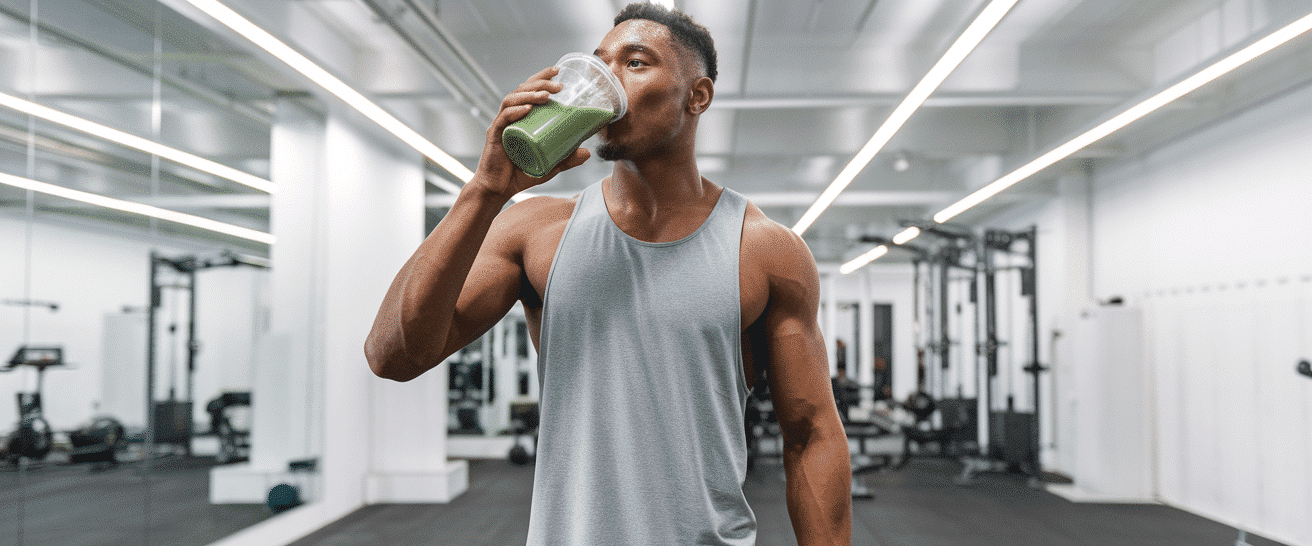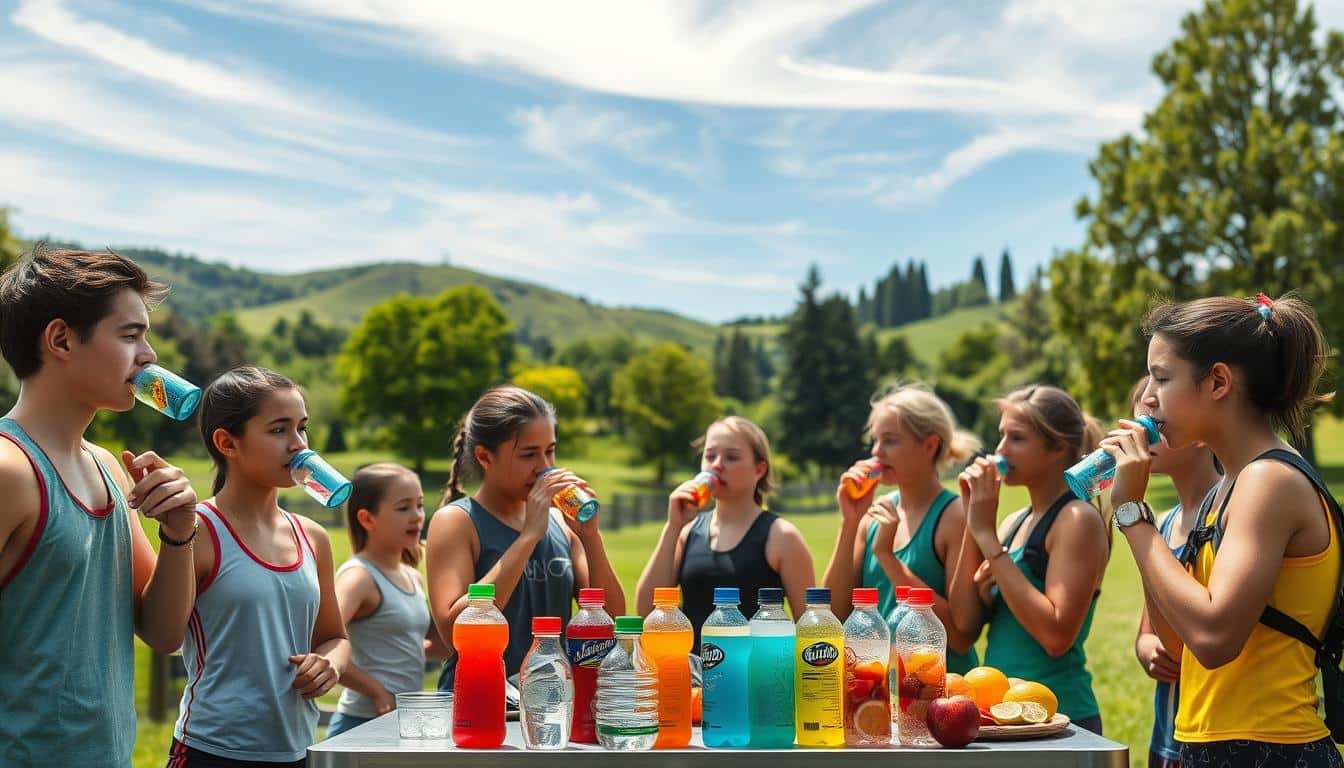Staying hydrated is a game-changer for young athletes. Whether you’re on the field, court, or track, water plays a huge role in keeping your energy up and helping your body recover. But did you know it’s not just about drinking water during the game? It starts way before you hit the heat of competition.
Sports dietitian Taylor Morrison emphasizes the importance of personalized hydration plans. For example, a 100-pound athlete should aim for about 350ml of water before activity. Simple strategies like decorating your water bottle or eating water-rich foods can make staying hydrated fun and easy.
Ready to boost your performance? Let’s dive into practical tips to keep you at your best, no matter the sport or season.
Why Hydration is Crucial for Young Athletes
Water is the unsung hero behind every great athletic moment. It fuels your muscles, sharpens your focus, and keeps your body running smoothly. For young athletes, staying properly fueled is even more critical because their bodies face unique challenges during physical activity.

The Role of Water in Athletic Performance
Water does more than quench your thirst. It regulates body temperature, which is vital during intense workouts. When you’re sprinting or making a game-winning play, your muscles generate heat. Water helps cool you down, like a radiator for your body.
Dehydration can lead to fatigue, cramps, and even heat illness. In fact, over 9,000 cases of heat-related issues are reported annually in U.S. high school sports. Staying hydrated ensures you can perform at your best, no matter the conditions.
Differences in Hydration Needs Between Young Athletes and Adults
Young competitors sweat differently than adults. Their bodies produce more heat but sweat less efficiently. This means they work harder to cool down, like an engine without enough coolant.
Research from the Oklahoma Sooners shows that teens lose twice as much sodium in their sweat compared to adults. This makes electrolyte replacement crucial for young athletes. A 130-pound teen, for example, needs about 20 gulps of water every 20 minutes during activity.
| Aspect | Young Athletes | Adults |
|---|---|---|
| Sweat Sodium Content | 2x higher | Standard |
| Heat Production | Higher | Moderate |
| Cooling Efficiency | Less efficient | More efficient |
Understanding these differences can help young athletes stay safe and perform better. By focusing on proper fluid intake, they can avoid dehydration and keep their energy levels high.
Hydration Strategies for Youth Athletes
Fueling your body with the right fluids can make or break your game. Whether you’re training or competing, a solid drink plan keeps you energized and focused. Let’s break down the best ways to stay fueled every step of the way.
Daily Fluid Intake Recommendations
Start by calculating your daily needs. A simple formula is 2.3ml multiplied by your body weight in pounds. For example, a 100-pound athlete should aim for about 230ml of water before activity.
Here’s a quick guide for different age groups:
| Age Group | Fluid Intake |
|---|---|
| 9-12 years | 3-8oz every 15-20 minutes |
| 13-18 years | 34-50oz hourly |
Hydration Before, During, and After Physical Activity
Timing matters. Drink about 16oz of water 2 hours before activity. During play, take 4 gulps every timeout. Afterward, refuel within 30 minutes to recover faster.
Tournaments often require salty snacks like pretzels. These help replace lost sodium and keep your energy steady.
Choosing the Right Fluids: Water vs. Sports Drinks
Water is perfect for most activities. But for intense sessions lasting over an hour, a sports drink can help. Look for salt rings on your clothes—this is a sign you need electrolytes.
Here’s when to switch:
- Water: Short workouts or practice sessions.
- Sports Drinks: Long games or hot conditions.
Carry a water bottle to stay on track. It’s a simple habit that keeps you at your best.
Special Conditions Affecting Hydration Needs
Certain situations can push your body to its limits, making smart fluid balance essential. Whether you’re playing in scorching heat or high altitudes, your body reacts differently. Understanding these challenges helps you stay safe and perform at your best.
Hydration in Hot and Humid Conditions
Playing in hot conditions can be tough. Your body sweats more to cool down, but in high humidity, sweat doesn’t evaporate as easily. This makes it harder to regulate your temperature.
In extreme cases, you can lose up to 2 liters of sweat per hour. This means replacing lost sweat is crucial. Look for signs like dark urine—it’s a warning to drink more immediately.
Impact of Altitude and Clothing on Hydration
Altitude acts like a hidden sponge, drying out your lungs faster. The higher you go, the more fluid your body needs. Add heavy gear like football pads, and dehydration risk jumps by 40%.
To stay ahead, use the “weigh-in test.” Weigh yourself before and after activity to calculate exact sweat loss. This helps you know how much to drink to stay balanced.
Recognizing Signs of Dehydration and Heat Illness
Spotting danger early can prevent serious issues. Symptoms like cramps, vomiting, or confusion are red flags. If you see these, it’s time to act fast.
Light-colored urine is a good sign you’re on track. But if it looks like apple juice, drink more right away. Staying aware of these signs heat can keep you safe and ready to perform.
Conclusion
Mastering your drink strategy can transform your game. Follow these golden rules: sip early, choose smart fluids, and watch for warning signs. These steps keep you strong and focused during every match or practice.
Make learning fun with Safe Kids’ hydration rap. It’s a great resource for teams to stay on track. Lindsay Hansen’s story is another inspiration—from a dehydrated college player to a hydration-advocating mom.
Bookmark the sweat rate calculator from Oklahoma Sooners’ research. It helps you understand your exact fluid needs. Remember, a well-fueled athlete is focused, powerful, and safe.
Take these steps today to boost your athletic performance. Staying hydrated isn’t just a habit—it’s your edge.


